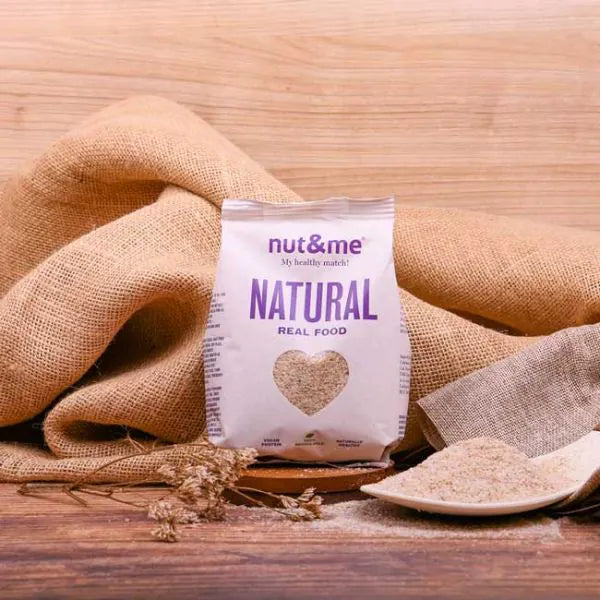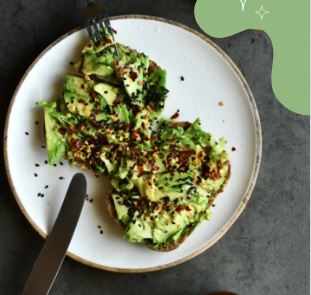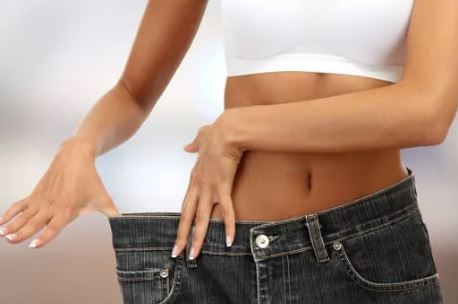Keto Information
Keto Information
Common mistakes on the keto diet and how to avoid them
Common mistakes on the keto diet and how to avoid them The ketogenic diet is one of the most popular for losing fat and improving metabolic health. However, many people abandon it due to simple but common mistakes. In this article, we'll tell you about the most common mistakes on the keto diet and, most importantly, how to easily avoid them to stay in ketosis without complications.
Read moreWhat is each supplement for?
Here I explain the most common keto supplements and what they are usually good for: 1. Electrolytes (sodium, potassium and magnesium) Problems they solve : Fatigue, headaches, muscle cramps, dizziness (also known as "keto flu"). Why you need them : When you cut carbs, your body loses water and, with it, essential electrolytes. If you don't replace them, you'll feel like a piece of junk. How to take them : Add salt to your meals (sodium), eat avocados (potassium) and take magnesium at night (great for relaxing). 2. MCT oil (medium chain triglycerides) Problem it solves : Lack of energy, difficulty entering or maintaining ketosis. Why you need it : This oil quickly converts into ketones, which are like premium gasoline for your body when you're on keto. How to take it : Add it to coffee (the famous "bulletproof coffee") or smoothies. Start small, because otherwise... watch out for the bathroom! 😅 3. Omega-3 (fish or krill oil) Problem it solves : Inflammation, lack of concentration and imbalance between healthy fats (Omega-3 vs. Omega-6). Why you need it : A keto diet can be high in fat, but you want to make sure it's the good kind. Omega-3s also help protect your heart and improve brain health. How to take : Take quality capsules or eat fatty fish such as salmon, sardines or mackerel. 4. Vitamin D Problem it solves : Low mood, weak bones, weak immune system. Why you need it : Many people are deficient in this vitamin, and on keto it's essential for overall health. How to take it : Take a daily supplement, or better yet, get out in the sun! But don't get burned, of course. 🌞 5. Fiber (psyllium husk or chia seeds) Problem it solves : Constipation. Why you need it : When cutting carbs, many people eat less fiber (goodbye grains and legumes), which can cause bathroom problems. How to take it : Add chia seeds, flax seeds or psyllium husks to your meals or drinks. 6. Multivitamin Problem it solves : Vitamin and mineral deficiency. Why you need it : If your keto diet is somewhat limited (for example, not a wide variety of vegetables), a multivitamin can fill in the gaps. How to take it : With the main meal of the day. 7. Collagen Problem it solves : Dry skin, brittle hair, weak nails, joint pain. Why you need it : Keto can sometimes reduce collagen production, and this supplement helps keep your skin, joints, and hair in good shape. How to take it : Powder, mixed with your coffee or smoothies 8. Rhodiola with Ashwagandha Problem it solves : Stress, anxiety, mental or physical fatigue. Why you need it : These adaptogenic herbs help balance stress hormones (like cortisol), improve mood, and increase resistance to burnout. How to take it : In capsules or powder, ideally in the morning or midday for a gentle boost. 9. Maca Problem it solves : Low energy levels, hormonal imbalance, low libido. Why you need it : Maca is known to improve energy and vitality, as well as regulate hormones (especially useful for women on keto). How to take it : In powder form, mixed with smoothies or infusions, or in capsules. 10. Satiating (e.g., glucomannan) Problem it solves : Hunger between meals or difficulty controlling portions. Why you need it : Glucomannan is a soluble fiber that expands in the stomach, helping you feel full longer. Perfect for when you're adjusting your macros on keto. How to take it : 15-30 minutes before meals, with plenty of water (important!). 11. Probiotics Problem it solves : Slow digestion, bloating, bowel problems or unbalanced flora. Why you need it : On keto, the change in your diet can alter your microbiota. Probiotics help you maintain a healthy gut, which is key to absorbing nutrients. How to take them : In capsules, or with probiotic-rich foods such as kimchi, sauerkraut, or kefir. 12. Draining (horsetail, orthosiphon or dandelion tea) Problem it solves : Fluid retention, swelling. Why you need it : On keto, you lose water at first, but you may retain fluids later. A natural draining agent helps eliminate toxins and reduce bloating. How to take it : Infusions or capsules, preferably in the morning to avoid spending the day in the bathroom. 😅 13. Creatine Problem it solves : Loss of strength, difficulty gaining muscle, fatigue during exercise. Why you need it : Ideal if you exercise on keto, as creatine improves muscle energy and performance. How to take it : One teaspoon daily mixed with water or shakes, preferably after training. 14. Vitamin B12 Problem it solves : Fatigue, weakness, difficulty concentrating. Why you need it : If you're on keto and eating fewer animal foods (rare, but it can happen), you could become deficient. B12 is essential for energy and nervous system health. How to take it : In capsules or sublingual drops, preferably with breakfast. 15. Myo-Inositol Problem it solves : Hormonal imbalances, polycystic ovary syndrome (PCOS), insulin resistance. Why you need it : It helps regulate blood sugar levels and improves insulin sensitivity, which can be helpful if you're adjusting your metabolism while on keto. How to take it : In powder or capsules, divided into two daily doses (morning and night). 16. L-Carnitine Problem it solves : Fatigue, difficulty burning fat efficiently. Why you need it : It helps transport fats into the mitochondria (the "power plants" of cells), which improves fat burning and energy on keto. How to take it : Before training or in the morning, in capsules or liquid. Remember: You don't need all of these supplements at once. Identify your needs and prioritize the ones that help you right now. And, as always, consult a doctor if you have any questions or specific medical conditions. 💡 Less is more! 😜
Read moreDiet Pro's Complete Guide to Protein Diets: Phases, Duration, and Customized Menus to Achieve Your Ideal Weight
The DIET PRO protein diet is a weight loss and control method based primarily on high protein consumption and almost total restriction of carbohydrates and fats. Its main objective is to promote the burning of body fat while preserving muscle mass. Instead of obtaining energy from carbohydrates, the body turns to fat reserves to meet its energy needs. This diet is often supported by high biological value protein supplements, which are easy to digest and help ensure adequate protein intake. Key benefits of a protein diet: Rapid weight loss by using fat stores as energy. Preservation of muscle mass thanks to high protein consumption. Easy to follow due to the use of protein sachets and simple preparation. Educational : Progressive phases teach how to reintroduce healthy foods in a sustainable way. Below is a table showing the recommended time for each phase of the DietPro diet, based on your realistic weight loss goals. You can find all the fresh produce at your local supermarket. You'll find the rest HERE. Important!: Phase 1 - Strict : Can be extended as needed until you reach 80% of the weight you want to lose. Phase 4 - Maintenance : This phase should always be performed, regardless of the weight lost, to avoid the rebound effect. Considerations: It is not suitable for people with certain serious illnesses (kidney, liver, heart failure, type 1 diabetes, pregnancy). It is essential to drink enough water and strictly follow the phases to achieve the best results without compromising your health. Here I present a simplified table with the menu for each phase of the DietPro method, so that it is easy to understand and follow: Allowed vegetables (no limit): Celery, chard, broccoli, spinach, cucumber, zucchini, lettuce, asparagus, green peppers, mushrooms, among others. Controlled vegetables (approx. 200g daily): Eggplant, pumpkin, onion, cabbage, cauliflower, green beans, tomato. Serving Equivalents : Dairy portion : 1 glass of skimmed milk, 1 0% skimmed yogurt, 1 portion of 0% fresh cheese. Fruit serving : 1 large piece (apple, pear) or 2 small ones (mandarin, kiwi). Bread serving : 1 mini roll, 2 slices of keto bread, 5 Diet pro cookies Sweet ham : 1 slice of lean Serrano ham, turkey cold cuts. Animal protein serving : 150g of meat (chicken, beef) or 200g of fish (hake, salmon). Carbohydrate serving : 60g of rice, pasta or legumes, 2 medium potatoes. Today is a good day to start! Start here.
Read moreHow to Eat Keto at a Restaurant: The Ultimate Guide to Maintaining Your Low-Carb Lifestyle
How to Eat Keto at a Restaurant: The Ultimate Guide to Maintaining Your Low-Carb Lifestyle If you're following a keto diet, going out to lunch or dinner at a restaurant can seem like a challenge. However, with a good strategy, you can enjoy a delicious meal without breaking your state of ketosis. This article offers practical tips on what to order at a restaurant to stay true to your low-carb diet and improve your well-being. Read on to find out how to enjoy a keto meal even when you're away from home! 1. Choose Restaurants with Flexible Menus When choosing a restaurant, it's best to opt for places with varied or customizable menus. Restaurants that specialize in meat, fish, or grilled dishes are ideal, as they typically have protein-rich and healthy-fat options that fit well with a keto diet. Restaurants serving Mediterranean cuisine, Japanese cuisine (without rice or noodles), or even those specializing in grilled dishes are perfect options. 2. Prioritize Proteins One of the pillars of the keto diet is consuming quality protein, accompanied by healthy fats. Look for dishes that feature meat, fish, seafood, or poultry as the main ingredient. Order your meat grilled, baked, or roasted, avoiding any type of breading or coating, which often contains flour or breadcrumbs (high in carbohydrates). Examples of keto-friendly options: Grilled steak with garlic butter. Grilled salmon with asparagus. Grilled chicken breast with avocado salad. Garlic shrimp. 3. Say No to Sugary Sauces Many restaurants use sauces that contain sugar or carbohydrate-rich ingredients. To avoid this, order your dishes without sauce, or better yet, ask for it on the side so you can control the amount. Opt for dressings based on olive oil, butter, or homemade mayonnaise (without added sugar). This will help you maintain the balance of healthy fats required for the keto diet. Keto-friendly dressings you can order: Olive oil with lemon. Melted butter. Sugar-free mayonnaise. Avocado sauce or natural guacamole. 4. Substitute Carbohydrate-Rich Side Dishes Main dishes at many restaurants come with carbs like French fries, rice, or bread. Don't worry! You can substitute these sides for more keto-friendly options. Order green salads, steamed vegetables, asparagus, mushrooms, or cauliflower as low-carb alternatives. Keto-friendly substitution ideas: Swap your fries for a green salad with avocado. Replace the rice with grated cauliflower or steamed broccoli. Replace the bread with slices of cucumber or celery to accompany your dish. 5. Be careful with drinks Drinks can be a source of hidden carbs at a restaurant. Avoid sodas, juices, and alcoholic beverages with added sugars. Instead, opt for mineral water, unsweetened tea, or black coffee. If you're craving an alcoholic drink, opt for keto-friendly options like dry wine or cocktails made with hard liquor (like vodka or gin) and sparkling water, avoiding sugary mixes. Recommended drinks: Sparkling water with lemon. Unsweetened iced tea. Coffee alone or with cream. Dry red or white wine. 6. Keto-Friendly Desserts Dessert menus are often filled with sugary options, but you can still enjoy something sweet while sticking to your keto diet. If the restaurant offers a cheese selection, this can be a great way to finish your meal. Another option is to order strawberries or raspberries with sugar-free whipped cream. Desserts you can enjoy: Cheese board. Strawberries and cream. Coffee with thick cream. 7. Be Clear with Restaurant Staff Don't be afraid to talk to the restaurant staff and ask for details about how dishes are prepared. Ask if recipe adjustments are possible to accommodate your keto needs. Most restaurants will be happy to help you customize your meal to fit your diet. 8. Bring Keto Options Just in Case If you're going to a restaurant where you're likely to find few keto options, consider bringing a keto-friendly snack with you. Low-carb protein bars, nuts, or a little cheese can save you money if there aren't many options on the menu. Conclusion Eating keto at a restaurant doesn't have to be difficult. With a few adjustments and smart choices, you can enjoy a delicious meal and stay in ketosis. Follow these tips the next time you go out and enjoy a keto meal worry-free!
Read moreHow to Calculate the Macros You Need to Lose Weight on the Keto Diet
How to Calculate the Macros You Need to Lose Weight on the Keto Diet The keto diet is one of the most popular when it comes to effective and sustained weight loss. Its focus on consuming foods high in healthy fats and low in carbohydrates changes the way your body burns energy, putting it in a state of ketosis , where you burn fat instead of glucose. But for this process to work at its best, it's essential to calculate your macros . Knowing how many grams of carbs, fats, and proteins you need daily will help you stay in ketosis and achieve your weight goals. What are macros and why are they important on the keto diet? Macros are the three macronutrients your body needs to function: carbohydrates, fats, and proteins. The keto diet is based on drastically reducing carbohydrates and increasing fat intake, while maintaining a moderate amount of protein. The typical macro breakdown on a keto diet is approximately: 70-75% fat 20-25% protein 5-10% carbohydrates However, everyone is different, and to lose weight effectively on keto, you'll need to adjust these percentages based on your calorie needs, activity level, and personal goals. Step by Step: How to Calculate Your Macros on Keto Calculate your total daily caloric expenditure (TDEE) This is the total number of calories you burn in a day, including your physical activity. You can find your TDEE using formulas that take into account your weight, height, age, gender, and activity level. Determine your calorie deficit If your goal is to lose weight, you need to consume fewer calories than you burn. Generally, a deficit of 15–20% of your TDEE is a good benchmark for healthy and sustainable weight loss. Divide your macros based on your calorie needs Carbohydrates : Should be minimal, usually between 20-50g net per day, which represents approximately 5-10% of your calories. Protein : Make sure you're getting enough to maintain your muscle mass. A good starting point is 1.2 to 2.0g of protein per kilogram of body weight . Fats : The rest of your calories will come from healthy fats, the key macronutrient on keto. Simplify the process with our keto macro calculator Calculating macros manually can be a bit tedious, but don't worry! We've designed an easy-to-use keto macro calculator that will do all the work for you. Just enter a few details about yourself and your goals, and in seconds you'll get the ideal macro distribution for your keto weight loss plan. 👉 Click here to calculate your macros and start your journey to healthy weight loss with keto .
Read moreCelebrities who follow the keto diet
Several celebrities and public figures have shared that they follow the ketogenic diet (keto diet). Here is a small example: Halle Berry: Actress Halle Berry has spoken openly about following the keto diet and how it has helped her maintain her health and energy. Kourtney Kardashian: Kourtney Kardashian has shared on social media her interest in the keto diet and how it has been part of her healthy lifestyle. Kim Kardashian: Famous television personality Kim Kardashian has experimented with the keto diet and shared her experiences online. LeBron James: Basketball player LeBron James has mentioned on several occasions that he follows a low-carb approach, similar to the keto diet, to maintain his athletic performance and health. Tim Tebow: Former American football player and commentator Tim Tebow has spoken about his keto diet and how it helps his lifestyle. Megan Fox: Actress Megan Fox has mentioned that she follows a ketogenic diet to maintain her health and fitness. Vinny Guadagnino: Known for his participation in the television show "Jersey Shore," Vinny Guadagnino has been following the keto diet and has shared his experience on social media. Alicia Vikander: Swedish actress Alicia Vikander followed a ketogenic diet to prepare for her role in the film "Tomb Raider." Gwyneth Paltrow: Although Gwyneth Paltrow is not known to strictly follow the keto diet, she has mentioned her preference for a diet low in carbs and high in healthy fats. Joe Rogan: Popular podcaster Joe Rogan has talked on his show about how he's experimented with the keto diet and other dietary approaches. You can find more information on the networks, such as HERE
Read moreUses and Benefits of Psyllium: A Powerful Fiber for Your Health
Psyllium is a natural fiber derived from the seeds of the Plantago ovata plant. Known for its many health benefits, psyllium has become a key ingredient for those looking to improve their digestive well-being, manage their weight, or maintain balanced cholesterol levels. In this article, we'll explore the main uses and benefits of psyllium, and how you can incorporate it into your diet for positive results. You can purchase it HERE What is Psyllium ? Psyllium is a soluble fiber that acts as a natural laxative. When mixed with water, it forms a gel that helps regulate intestinal transit, improve digestive health, and provide a feeling of satiety. This ability to absorb water makes it an effective ally for both treating constipation and controlling diarrhea, improving overall intestinal balance. 1. Digestive Health: Balance and Regularity One of the most common uses of psyllium is as a digestive supplement . As a soluble fiber, it absorbs water and helps soften stool, facilitating its passage through the intestinal tract. This makes it an excellent remedy for those suffering from chronic constipation. Additionally, by acting as a prebiotic, psyllium promotes the growth of healthy bacteria in the gut, helping to improve the gut microbiota. 2. Control of Cholesterol Levels Psyllium has also been shown to be effective in reducing blood cholesterol levels. By forming a gel-like structure in the intestine, it traps bile acids containing cholesterol and eliminates them from the body. According to several studies, regular consumption of psyllium can help reduce LDL ("bad") cholesterol without affecting HDL ("good") cholesterol. This makes it an excellent supplement for those looking to improve cardiovascular health. 3. Blood Sugar Level Control Another important benefit of psyllium is its ability to control blood glucose levels . By slowing the digestion of carbohydrates, psyllium can help stabilize blood sugar levels after meals, making it an ideal supplement for people with type 2 diabetes or those looking to prevent blood sugar spikes. 4. Helps in Weight Control Psyllium is a natural ally for controlling appetite . By expanding in the stomach and forming a gel, it causes a feeling of satiety, which can reduce food consumption and help control weight. This fiber can be a useful tool in weight-loss diets, as it allows people to feel fuller for longer, reducing the need to snack between meals or consume extra calories. 5. Compatible with Keto and Low-Carb Diets Psyllium is a fiber that doesn't significantly impact net carb levels, making it perfect for those following a keto or low-carb diet . Being a low-calorie and low-carb supplement, it can be used in keto recipes to improve the consistency of breads, cookies, and other baked goods without sacrificing the principles of this diet. How to Incorporate Psyllium into Your Diet Psyllium is available in powder, capsule, or as an ingredient in some food products. Here are some ideas for adding it to your diet: Smoothies and Shakes: Adding a teaspoon of psyllium to your smoothies or shakes is an easy way to increase your fiber intake. Home Baking: You can use psyllium to improve the texture of breads and other baked goods, especially in gluten-free or low-carb recipes. With water or juice: Taking psyllium with water or fruit juice is a quick and effective way to enjoy its digestive benefits. It's important to increase the amount of water you consume when introducing psyllium into your diet, as this fiber requires liquids to form the gel and facilitate its action in the digestive system. Possible Side Effects Although psyllium is generally safe, some people may experience bloating, gas, or stomach upset, especially if they don't drink enough water. As with any supplement, it's recommended to start with a low dose and increase gradually, allowing your body to adapt to the new amount of fiber. Conclusion Psyllium is a natural supplement with multiple benefits for digestive, cardiovascular, and metabolic health. As a soluble fiber, it helps regulate intestinal transit, reduce cholesterol levels, control blood sugar, and promote satiety. It's also a versatile ingredient that can be easily incorporated into low-carb or keto diets. If you're looking to improve your overall well-being, psyllium can be an excellent ally in achieving your health goals. Are you ready to try psyllium? Incorporate this powerful ingredient into your life and enjoy its benefits! Buy it at TIENDAKETO.ES
Read moreHow to Start the Keto Diet from Scratch: Complete Guide and 2-Week Menu
How to Start the Keto Diet from Scratch: Complete Guide and 2-Week Menu The keto (or ketogenic) diet is more than just a fad; it's a dietary strategy that has been proven effective for weight loss and improving health. It is based on minimizing carbohydrates, prioritizing healthy fats, and moderating protein consumption. In this article, we'll explain step-by-step how to start from scratch and provide a menu for your first two weeks. What is the Keto Diet? The ketogenic diet focuses on inducing a metabolic state called nutritional ketosis . Normally, the body gets energy from the carbohydrates you consume. However, by drastically reducing carbohydrates (generally less than 50 grams per day), the body begins to burn stored fat for energy. This process produces ketone bodies, which are used as fuel, helping you lose weight and have more sustained energy. The Basic Principles of the Keto Diet Healthy fats as your primary source of energy : Approximately 70-75% of your daily calories should come from healthy fats such as avocados, olive oil, coconut oil, and butter. Moderate Protein : Protein should represent 20-25% of your calories. Choose quality sources such as beef, chicken, fish, eggs, and dairy products. Very low carbs : Only 5-10% of your daily intake will be carbohydrates. This includes mostly low-carb vegetables like spinach, kale, broccoli, and cauliflower. Benefits of the Keto Diet Rapid Weight Loss : By burning fat as your primary source of energy, it is common to see weight loss results within the first few weeks. Increased energy and focus : Many people report feeling more alert and energetic throughout the day. Appetite control : The keto diet can help you better control hunger, since fats and proteins are more satiating than carbohydrates. Improved blood sugar and cholesterol levels : Studies suggest that the ketogenic diet may improve insulin sensitivity and increase HDL ("good") cholesterol. Foods Allowed on the Keto Diet Healthy Fats: Avocado Olive oil Butter Coconut oil Nuts and seeds Proteins: Meat (beef, pork, chicken) Fish (salmon, tuna, sardines) Eggs Dairy products (cheese, cream) Low Carb Vegetables: Spinach Broccoli Cauliflower Zucchini Peppers Keto-Friendly Snacks and Foods at TiendaKeto.es Foods to Avoid Sugars (sweets, soft drinks, juices) Grains and cereals (rice, pasta, bread) Processed foods Legumes Fruits high in sugar (banana, apple, grapes) Common Side Effects (and How to Manage Them) When starting the keto diet, you may experience symptoms known as the "keto flu." These can include headaches, fatigue, dizziness, and moodiness due to the reduction in carbohydrates. To combat these symptoms: Hydrate well : Drink electrolytes, like this one . Increase your intake of sodium, potassium, and magnesium : Eating foods like avocados and spinach or using electrolyte supplements can help. 2-Week Menu to Start the Keto Diet Week 1: Monday Breakfast: Scrambled eggs with spinach and avocado. Lunch: Tuna salad with olive oil and olives. Dinner: Grilled chicken breast with steamed broccoli and butter. Tuesday Breakfast: Greek yogurt with walnuts and chia seeds. Lunch: Hamburger with cheddar cheese and avocado. Dinner: Grilled salmon with asparagus and olive oil. Wednesday Breakfast: Keto smoothie with coconut milk, spinach, and almond butter. Lunch: Roasted chicken with green leaf salad and olive oil. Dinner: Keto tacos with cauliflower tortillas, beef, and guacamole. Thursday Breakfast: Fried eggs in coconut oil and bacon. Lunch: Stir-fried beef with peppers and keto balsamic sauce . Dinner: Cauliflower and cream cheese soup. Friday Breakfast: Keto cloud bread with cream cheese. Lunch: Caesar salad with chicken and homemade dressing with keto sesame toast. Dinner: Keto ham and 3 cheese pizza . Saturday Breakfast: Ham and cheese omelette. Lunch: Grilled tuna with avocado salad. Dinner: Pork chop with kale sautéed in olive oil. Sunday Breakfast: Keto protein shake Lunch: Baked chicken with zucchini and peppers. Dinner: Beef steak with herb butter and asparagus. Week 2: Monday Breakfast: Greek yogurt with almonds and cinnamon. Lunch: Chicken salad with avocado and keto sweet and sour sauce . Dinner: Salmon with roasted broccoli and butter. Tuesday Breakfast: Scrambled eggs with bacon. Lunch: Keto burger with cheese, lettuce, and tomato. Dinner: Chicken fajitas with cauliflower tortillas and guacamole. Wednesday Breakfast: Coconut and spinach smoothie with avocado. Lunch: Grilled chicken with coleslaw. Dinner: Keto tacos with beef and guacamole. Thursday Breakfast: Fried eggs with chorizo. Lunch: Tuna salad with olives and feta cheese. Dinner: Beef steak with butter and asparagus. Friday Breakfast: Keto pancakes with almond flour and whipped cream. Lunch: Roasted chicken with avocado and salad. Dinner: Keto cauliflower crust pizza with cheese and pepperoni. Saturday Breakfast: Scrambled eggs with ham and cheese. Lunch: Shrimp salad with avocado. Dinner: Keto lasagna with layers of zucchini and minced meat. Sunday Breakfast: Coconut smoothie with spinach and almond butter. Lunch: Chicken curry with cauliflower. Dinner: Fish fillet with garlic butter and asparagus. Conclusion Starting the keto diet from scratch doesn't have to be complicated. Follow these basic principles, plan your meals , and use specialized products like those from TiendaKeto.es to ease your transition to a ketogenic lifestyle. In two weeks, you could notice significant changes in your energy and body composition. Good luck!
Read more5 Benefits of the Keto Diet That Will Transform Your Life
The keto (ketogenic) diet is one of the most effective strategies for losing weight and improving overall health. By drastically reducing carbohydrates and increasing healthy fats, the body enters a state of ketosis , which offers a wide range of benefits. In this article, we explore the 5 main benefits of the keto diet and how they can transform your life forever. 1. Fast and Sustainable Weight Loss One of the most notable benefits of the ketogenic diet is rapid weight loss . By limiting carbohydrates, your body burns fat efficiently. Ketosis, the process in which the body uses fat as its primary source of energy, accelerates the burning of body fat, helping you lose weight quickly and sustainably. 2. Appetite Control and Craving Reduction The keto diet helps you control your appetite. Meals rich in fat and protein are more satiating, which reduces cravings and calorie intake. This makes following a low-carb diet easier in the long run, eliminating the constant feeling of hunger that often accompanies other diets. 3. Improved Mental Clarity and Focus Many keto diet followers report improved mental clarity and focus. Ketones, which the body produces during ketosis, are an efficient energy source for the brain. This can result in a significant increase in concentration, memory, and daily productivity. 4. Stabilization of Blood Sugar Levels A key benefit of the keto diet is blood sugar stabilization. By reducing carbohydrate intake, sharp spikes and drops in glucose levels are minimized, which is especially beneficial for people with type 2 diabetes or insulin resistance. Maintaining stable blood sugar levels also contributes to improved energy and less fatigue. 5. Increased Energy and Physical Performance Contrary to popular belief, the ketogenic diet can improve your physical performance. By adapting to burning fat as fuel, your body becomes more efficient, resulting in more stable and longer-lasting energy levels. This is especially useful for those looking to improve their athletic performance or simply increase their daily vitality. Conclusion: The keto diet offers transformative benefits, from weight loss to improved mental and physical well-being. If you're looking for a lifestyle change that will help you feel better and live healthier, the ketogenic diet is an excellent option. Start today and discover how these benefits can change your life. Visit KETO STORE to see a variety of keto products at the best prices!
Read moreMaca and Menopause: Benefits and How to Use It to Relieve Symptoms
Maca and Menopause: Benefits and How to Use It to Relieve Symptoms Menopause and premenopause are natural stages in a woman's life, but they are often accompanied by uncomfortable symptoms such as hot flashes, mood swings, insomnia, and decreased energy. During these periods, many women seek natural solutions to relieve symptoms and improve their quality of life. Maca , a superfood native to the Andes, has earned a reputation as a natural ally for balancing hormones and mitigating the effects of menopause. In this article, we'll explore the benefits of maca , how it can help you during menopause and premenopause, and how you can incorporate it into your daily routine. What is Maca and How Does It Work? Maca is a root that grows in the high altitudes of the Peruvian Andes. Known as an adaptogen , maca helps the body adapt to stress and balance hormonal functions, making it an ideal remedy for hormonal imbalances common during menopause and premenopause. Maca root contains several essential nutrients such as B vitamins, vitamin C, minerals (calcium, iron, potassium) and amino acids, which contribute to its beneficial effect on hormonal and general health. Benefits of Maca During Menopause and Premenopause Natural Hormonal Regulation During menopause, estrogen and progesterone levels fluctuate, causing symptoms such as hot flashes, night sweats, and mood swings. Maca acts on the endocrine system, helping to naturally balance these hormones. This results in a significant reduction in bothersome symptoms without the need for synthetic hormone therapies. Mood Enhancement and Stress Reduction Hormonal changes can affect mood, causing irritability, anxiety, or even depression. Maca is known for its ability to stabilize mood and reduce anxiety by acting on the hypothalamus-pituitary-adrenal axis, which regulates the body's response to stress. Increased Energy and Reduced Fatigue : A common complaint during menopause is a lack of energy. Maca is a natural energizer that increases energy levels and combats fatigue. This is especially beneficial for those experiencing a drop in vitality. Bone Health With the decline in estrogen levels, bone density can be compromised during menopause. Maca is rich in calcium and other minerals that can help maintain bone health and reduce the risk of osteoporosis. Libido and Sexual Health Many women experience a decrease in sexual desire during menopause. Maca has been traditionally used to improve libido and sexual function, which can help improve quality of life during this stage. How to Use Maca Maca can be consumed in different forms, the most common being powder or capsules. Here's how to use it for best results: Powder: You can add a tablespoon (approximately 5 grams) of maca powder to smoothies, juices, yogurt, or even coffee. It's recommended to start with a low dose and gradually increase as you feel comfortable with its effects. Capsules: If you prefer a more convenient option, maca capsules are ideal. Simply follow the manufacturer's instructions, which typically suggest taking one or two capsules daily with meals. At Scientific Nutrition, maca capsules are formulated to ensure an effective and consistent dose. Additional Information about Scientific Nutrition Maca Scientific Nutrition's Maca stands out for its high quality and purity. Its formula is designed to maximize the adaptogenic benefits of maca, helping women balance their hormones, improve their energy, and improve overall well-being during menopause. By choosing a product like this, you're guaranteed to get a supplement that has been carefully processed to maintain all of its nutritional properties. Some of the highlights of Scientific Nutrition's maca include: 100% Natural and Pure: Free of additives and preservatives. High Nutritional Content: Rich in vitamins, minerals and essential amino acids. Proven Effects: With studies that support its effectiveness in hormonal regulation and improving well-being. Conclusion Maca is a powerful and versatile superfood that can offer numerous benefits during menopause and premenopause. By incorporating it into your daily routine, whether in powder or capsule form, you can take advantage of its properties to regulate your hormones, improve your mood, and increase your energy. If you're looking for a natural and effective solution to relieve the symptoms of menopause, Scientific Nutrition's maca is an excellent option to help you maintain balance and well-being during this stage of your life.
Read moreBack to Routine: How to Get Back on the Keto Diet After the Holidays
Vacations are a time to relax, enjoy, and sometimes indulge in some of the things we normally avoid during the rest of the year. However, at the end of summer, many people face the challenge of getting back into their routine and resuming healthy habits. If you've been following the keto diet before the holidays, don't worry! Here's how to easily get back on the keto diet, lose those extra pounds, and get back into ketosis quickly and effectively. 1. Reset Your Mindset: Refocus on Your Goals The first step to getting back on the keto diet is to get your mind right. Remember why you started this journey toward a low-carb, high-healthy-fat diet. Your weight loss, wellness, and energy goals may have been compromised during the holidays, but now is the time to refocus. If you need an extra boost, an exogenous ketone supplement like Real Ketones can help you enter ketosis faster, reducing the effects of the “keto flu” and improving your energy from day one. 2. Organize Your Keto Kitchen: Key to Success Having your kitchen ready for the keto diet is essential to avoiding temptation and staying on track. Make sure you have staples like coconut oil, grass-fed butter, avocados, and nuts on hand. If you need to restock your pantry, visit the Keto Store and make sure you have everything you need to prepare easy and delicious keto recipes. You can also find low-carb flour blends andsugar-free sauces that will make cooking much easier. 3. Plan Your Meals: Simplify Your Return to Ketosis Meal planning is crucial when returning to the keto diet. Prepare a weekly menu that includes your favorite keto recipes, such as low-carb breakfasts, light lunches, and filling dinners. You'll find free weekly keto menus at the keto store. Don't know where to start? Our range of Keto Snacks is perfect for quick and healthy options when hunger strikes. These snacks are ideal for effortlessly staying in ketosis, whether at work or at home. 4. Avoid Cravings: Goodbye Sugar, Hello Ketosis It's normal for your body to crave more sugar and carbs than usual after the holidays. To combat those cravings, opt for keto-friendly sweet alternatives, such as sweet keto snacks . There you'll find products low in carbohydrates, rich in fiber and healthy fats, making them a perfect ally to stay in ketosis while enjoying a delicious flavor. 5. Stay Hydrated: Hydration is Key on the Keto Diet One of the most important aspects of returning to the keto diet is hydration. During the holidays, it's easy to forget to drink enough water, but now it's crucial to do so. Keep your body hydrated with water, sugar-free infusions, and electrolyte-rich drinks. The best electrolyte and keto-friendly isotonic drink we've tried is REFIX . REFIX is the only isotonic drink that naturally provides up to 78 electrolytes, thanks to being composed of a 20% seawater. For this reason, REFIX is the ideal substitute for sugary and artificial recovery drinks. 6. Measure Your Progress: The Importance of Small Victories Don't forget to celebrate your achievements, no matter how small. Use ketosis test strips to measure your ketone levels and see how your body adapts to burning fat for energy again. Plus, keeping track of your weight, measurements, and how you feel daily will motivate you to keep going. You can track your progress with a good keto planner , which will make a difference in your results, as everything will be reflected. Conclusion Getting back on the keto diet after the holidays doesn't have to be complicated. With a clear mindset, proper planning, and the right products from Keto Store , you'll be back in ketosis in no time and ready to shed those extra pounds you accumulated during the summer. Remember, every little step counts, and with the help of products designed to make your keto lifestyle easier, success is within your reach. Get ready for a September full of energy and health with the keto diet!
Read moreWhy Can't I Lose Weight on the Keto Diet? The Key Is to Complete Your Fat Macros
The Importance of Completing Fat Macros on the Keto Diet to Avoid Stagnation The ketogenic diet, commonly known as the keto diet, has gained popularity for its effectiveness in weight loss and improved metabolic health. One of the keys to this diet is its high fat, moderate protein, and low carbohydrate intake. However, one of the most common challenges is reaching the necessary fat macros. Here, we explain why it's crucial not to neglect this aspect and how it can prevent your progress from stagnating. #### 1. **Primary Source of Energy** On the keto diet, fats become the primary source of energy instead of carbohydrates. When you drastically limit carbohydrates, your body enters a state of ketosis, in which it burns fat for energy. If you don't consume enough fat, you may feel fatigued and lacking energy, which affects your daily performance and your motivation to continue the diet. #### 2. **Hunger Satisfaction and Control** Fats have a greater satiating effect than carbohydrates and proteins. Consuming the right amount of fat helps you feel fuller longer, which reduces cravings and the risk of overeating. This is essential for maintaining the calorie deficit necessary for weight loss without feeling constantly hungry. #### 3. **Hormonal Balance** Fats are crucial for hormone production and regulation. Adequate intake of healthy fats helps maintain hormonal balance, which is critical for various bodily functions, including metabolism and fat burning. A low-fat diet can disrupt this balance and lead to problems such as fatigue, stress, and weight loss resistance. #### 4. **Nutrient Absorption** Some essential vitamins, such as vitamins A, D, E, and K, are fat-soluble, meaning they require fat to be properly absorbed by the body. Failure to meet your fat macros can lead to nutritional deficiencies, affecting your overall health and optimal body function, which could stall your progress on your diet. #### 5. **Maintaining Muscle Mass** Consuming the right amount of fat also helps protect muscle mass. During ketosis, if you don't consume enough fat, your body may turn to muscle protein for energy, which can lead to muscle loss. Maintaining an adequate fat intake ensures your body uses fat as its primary energy source and preserves muscle mass. #### 6. **Avoid Weight Loss Stagnation** When you don't consume enough good fats, your body may interpret the lack of available energy as a state of starvation. This can lead to a slowing of your metabolism as a survival mechanism, causing weight loss to stall. Additionally, insufficient fat intake can lead to increased protein or carbohydrate intake, taking you out of ketosis and hindering fat burning. ### Tips to Increase Fat Intake - **Choose healthy fats:** Opt for avocados, nuts, seeds, olive oil, coconut oil, and fatty fish. - **Add fats to your meals:** Add oils and butter to your dishes, and choose cuts of meat with a higher fat content. - **High-fat snacks:** Consider snacks like cheese, olives, and hard-boiled eggs to increase your fat intake between meals. ### Conclusion Hitting your fat macros on the keto diet is not only important, but essential to avoiding plateaus and maximizing the benefits of this diet. Make sure you plan your meals appropriately and consume enough healthy fats to stay in ketosis, feel satisfied, and maintain optimal hormonal balance. This way, you can enjoy a smoother and more successful path to your health and weight loss goals. Remember, the key to success on the keto diet lies in balance and consistency. Don't underestimate the power of fats!
Read more












